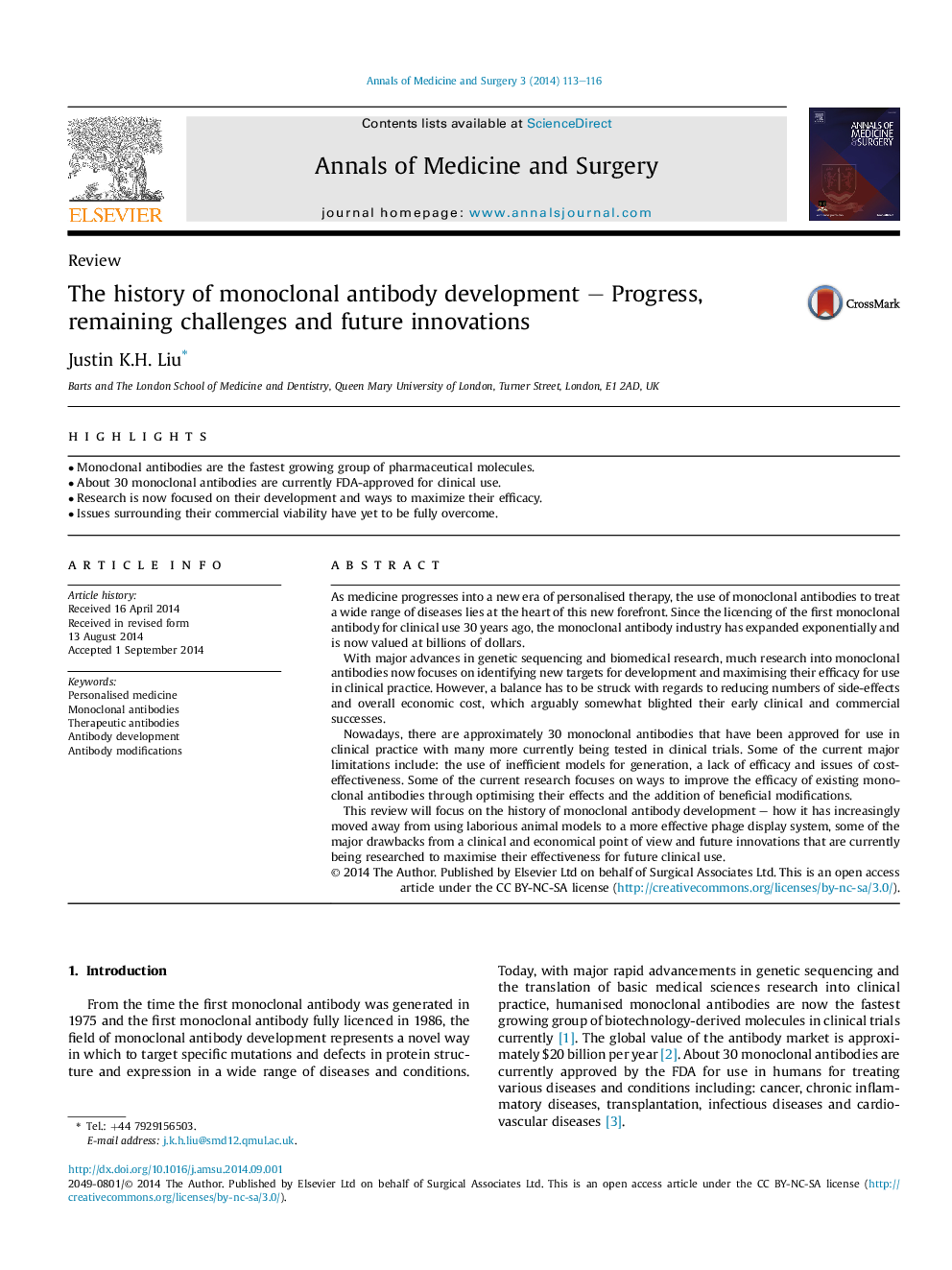| Article ID | Journal | Published Year | Pages | File Type |
|---|---|---|---|---|
| 4195473 | Annals of Medicine and Surgery | 2014 | 4 Pages |
•Monoclonal antibodies are the fastest growing group of pharmaceutical molecules.•About 30 monoclonal antibodies are currently FDA-approved for clinical use.•Research is now focused on their development and ways to maximize their efficacy.•Issues surrounding their commercial viability have yet to be fully overcome.
As medicine progresses into a new era of personalised therapy, the use of monoclonal antibodies to treat a wide range of diseases lies at the heart of this new forefront. Since the licencing of the first monoclonal antibody for clinical use 30 years ago, the monoclonal antibody industry has expanded exponentially and is now valued at billions of dollars.With major advances in genetic sequencing and biomedical research, much research into monoclonal antibodies now focuses on identifying new targets for development and maximising their efficacy for use in clinical practice. However, a balance has to be struck with regards to reducing numbers of side-effects and overall economic cost, which arguably somewhat blighted their early clinical and commercial successes.Nowadays, there are approximately 30 monoclonal antibodies that have been approved for use in clinical practice with many more currently being tested in clinical trials. Some of the current major limitations include: the use of inefficient models for generation, a lack of efficacy and issues of cost-effectiveness. Some of the current research focuses on ways to improve the efficacy of existing monoclonal antibodies through optimising their effects and the addition of beneficial modifications.This review will focus on the history of monoclonal antibody development – how it has increasingly moved away from using laborious animal models to a more effective phage display system, some of the major drawbacks from a clinical and economical point of view and future innovations that are currently being researched to maximise their effectiveness for future clinical use.
